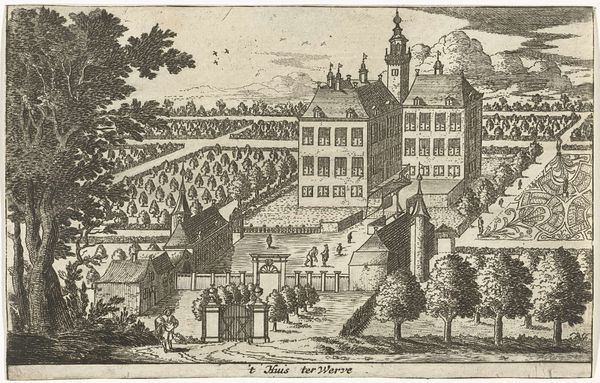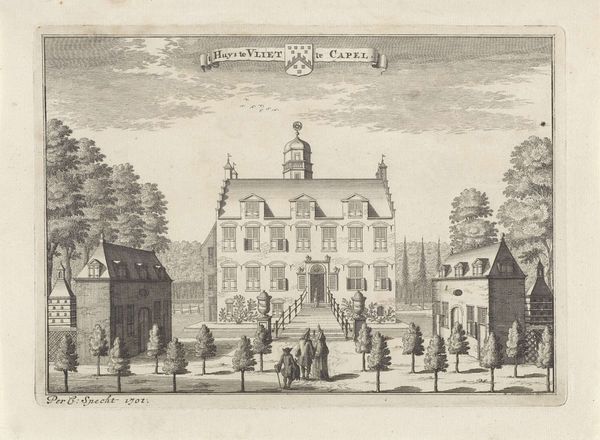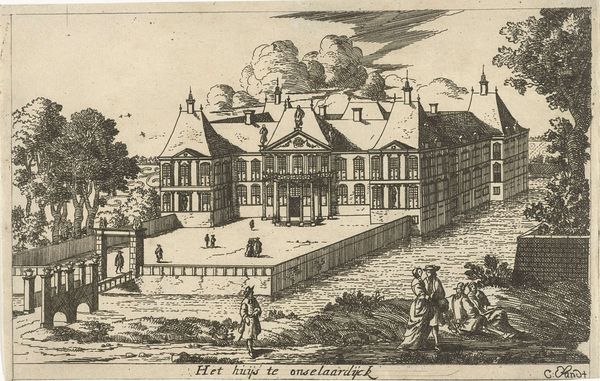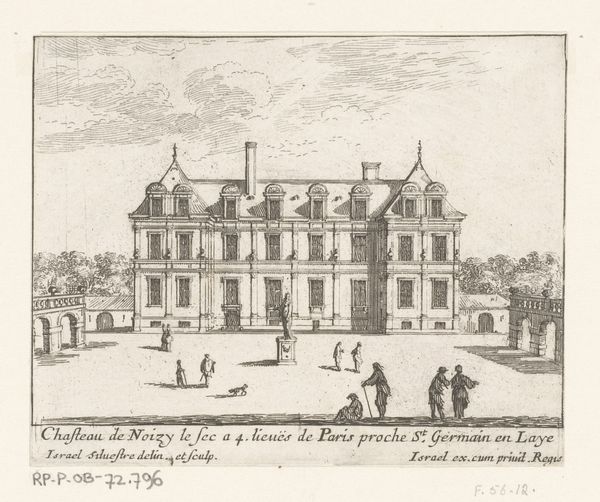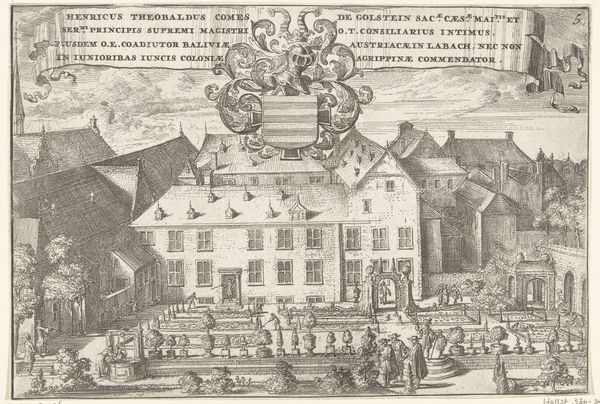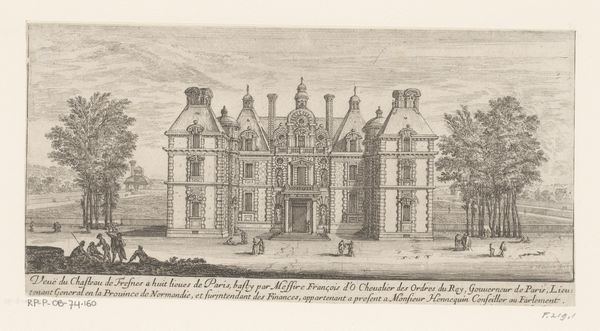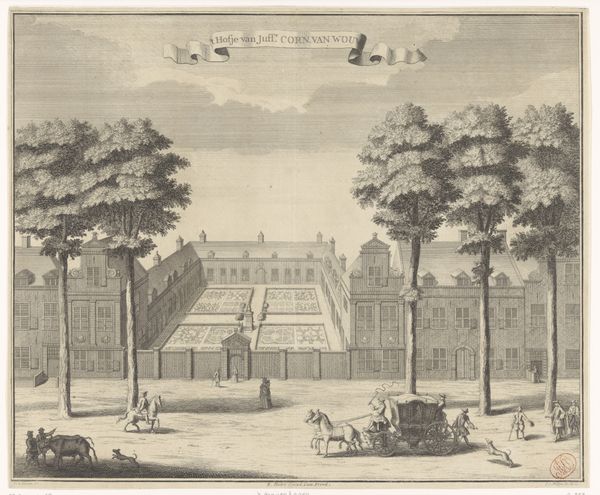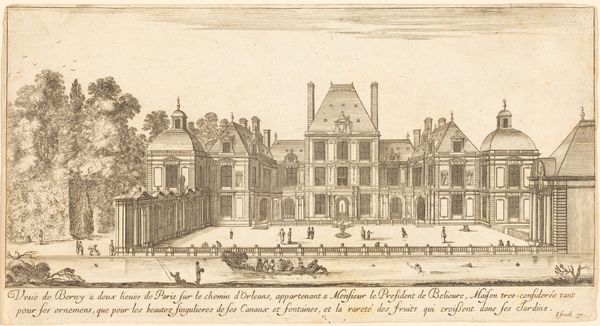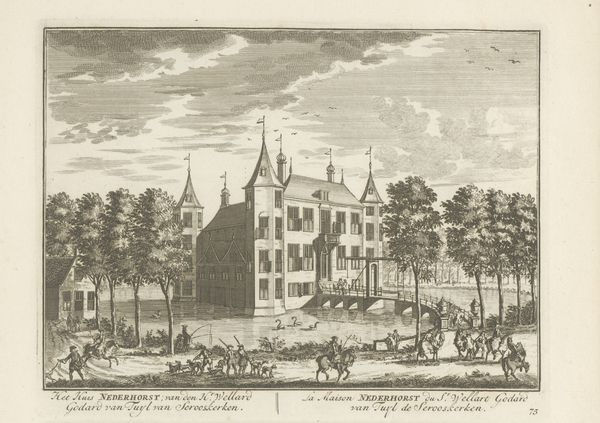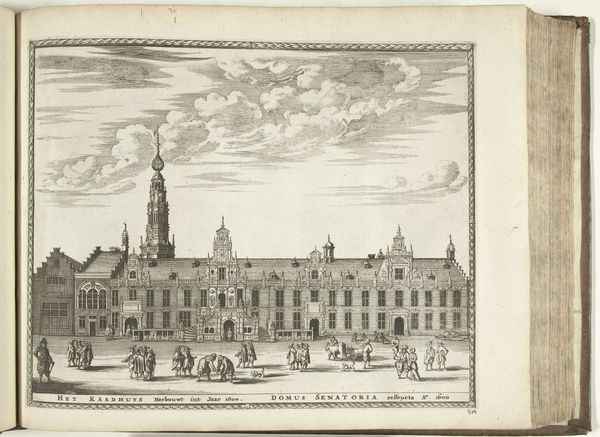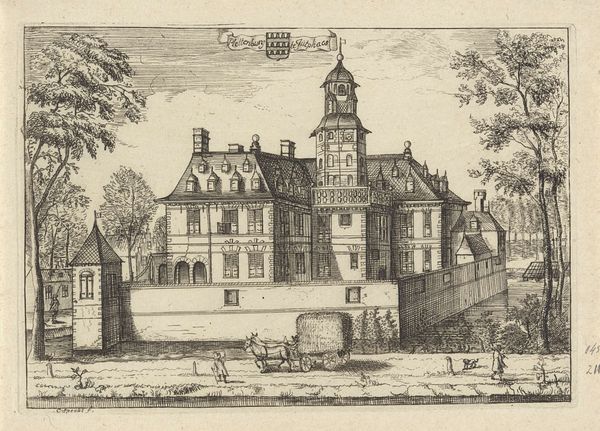
drawing, paper, engraving, architecture
#
drawing
#
baroque
#
landscape
#
paper
#
cityscape
#
genre-painting
#
engraving
#
architecture
Dimensions: height 62 mm, width 80 mm
Copyright: Rijks Museum: Open Domain
Editor: This is Abraham Zeeman’s “View of Castle Rosendael,” made in 1727. It’s an engraving on paper that captures a Dutch cityscape. I am really drawn to how the lines create texture, especially in the sky. What stands out to you about this piece? Curator: For me, the key lies in understanding how Zeeman utilized the very process of engraving to not just represent but almost construct the world he depicts. Consider the repetitive, labor-intensive act of carving lines into the copper plate. It’s a means of production, directly linked to the accessibility and consumption of images in 18th-century Netherlands. It wasn't a one-off piece; rather, it's intended to be reproduced for the masses. Editor: That's a really interesting way to frame it. So you're saying that the act of creating multiple prints changes our interpretation of it? Curator: Absolutely. Think about the division of labor implicit in creating this image. Zeeman likely had assistants. The print was then circulated and sold. What socioeconomic implications might emerge when art shifts to serial reproduction of the same view? The image then turns into a commodified snapshot, ready for mass consumption. Editor: That makes so much sense. I never thought about the printmaking process itself being a statement. Are those figures on the river involved in the economy of leisure? Curator: Precisely! They highlight how landscape art also documents class, leisure, and nascent tourist industries. Did looking at the process through this angle change the way you see the work? Editor: Definitely! Focusing on the materials and reproduction really reveals hidden social layers that I didn't notice before. It adds a whole new dimension to appreciating the piece. Curator: Indeed. By recognizing the artistic labor, you moved beyond its surface representation to really analyze what was actually at play and what underpinned it.
Comments
No comments
Be the first to comment and join the conversation on the ultimate creative platform.
